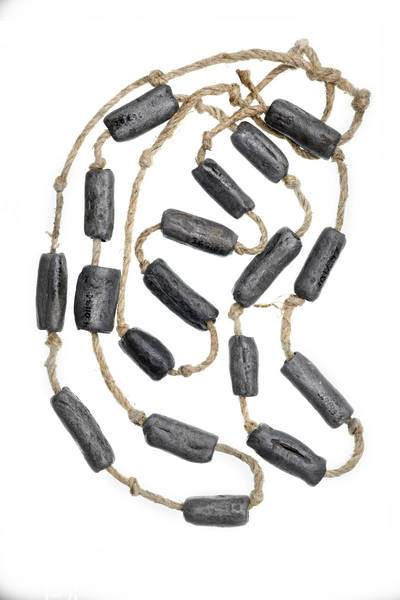About this object
-
ID:
26710
Production date:
Late Medieval; 15th century
-
Location:
In Store
Eighteen lead weights from a fishing net found at the bottom of the wreck of a 15th-century ship in the Thames at Blackfriars. No other evidence of fishing was found in the wreck so its possible that this net was snagged on the wreck after it had sunk rather than being used on the ship for fishing. A total of 1109 weights were recovered, though up to 300 more weights may have been missed in the rush to excavate the wreck. The weights were probably from a 'seine' net, one of the oldest types of fishing net to be used in rivers. 'Seine' nets were made from a long train of netting with weights on the bottom and floats on the top. The net would have been cast into the river and then hauled onto the bank or onto a boat. The wreck was found only six metres from shore so it's possible that the net had been cast into the river by fishermen standing on the bank. Calculations based on the number of weights, their size and how they may have been attached, have indicated that the net could have been around 56.5 metres long (185 ft). It would have been very large and heavy, needing several people to handle it. This discovery is published in Marsden, P. (1996): Ships of the Port of London. Twelfth to seventeenth centuries AD. English Heritage Archaeological Report 5, pg. 102-103.
-
Measurements
L (smallest weights) 14 mm; L (largest weights) 45 mm
-
Materials
lead alloy
-
Last Updated
2024-03-26
Record quality:
Not every record in Collections Online is complete. Some have low quality images designed purely for recognition, while some have been catalogued only to a basic standard. This graphic is designed to give you an impression of the quality of data you can see. 100% meets all our current data standards and has a high quality image, 20% is a basic record with no image. Individual record quality can change over time as new photography is carried out and records are worked on.
X








